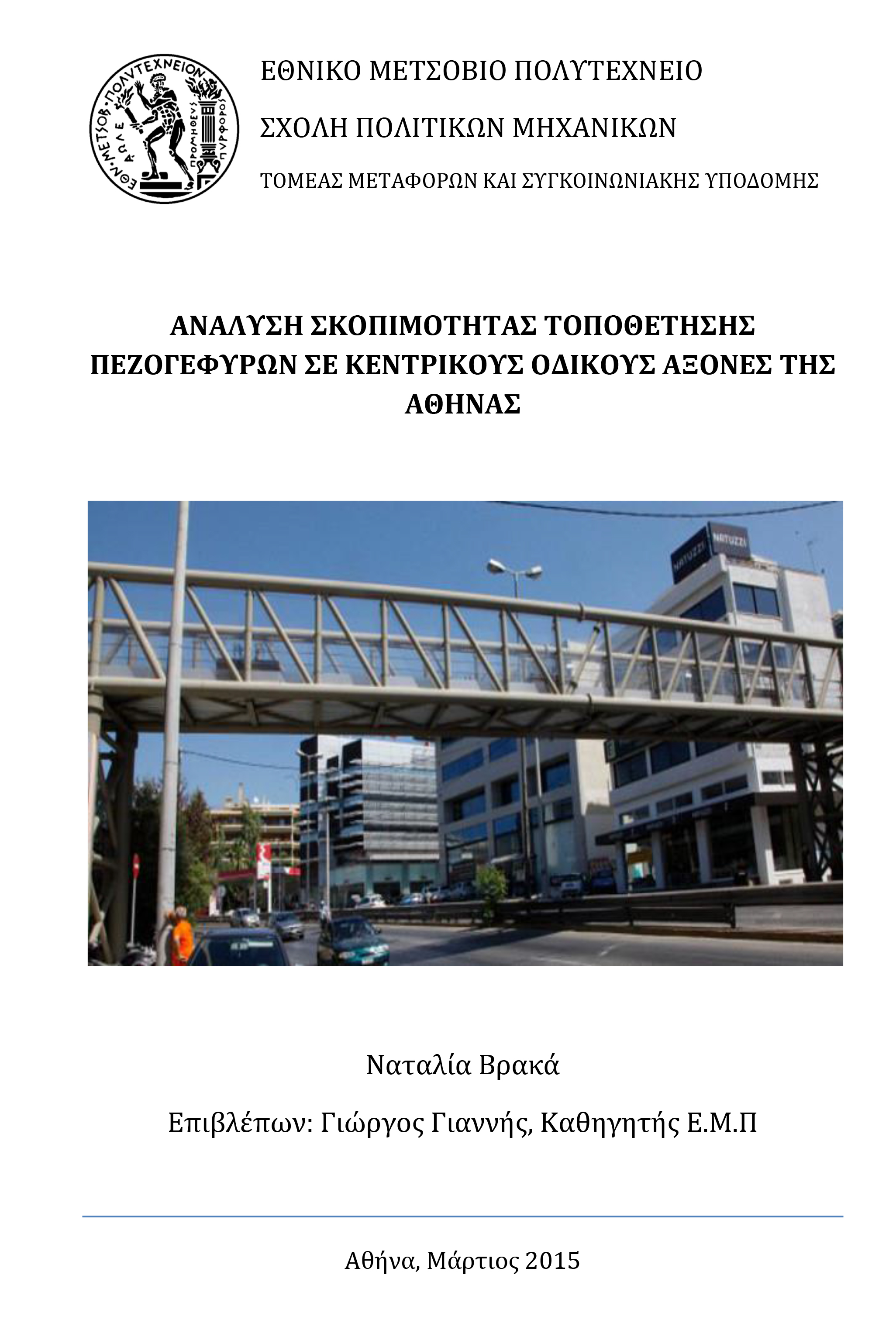
The objective of this Diploma Thesis is to analyze the feasibility of the installation of pedestrian bridges in central road axes of Athens. At first, hazardous road locations for the five year period 2007 – 2011, were identified through the Quality Control method, assessing accident data concerning pedestrians and traffic volume data regarding eleven central road axes of Athens with a high pedestrian traffic. Then, a ‘’before’’ and ‘’after’’ accident analysis method with a large control group was used for some existing pedestrian bridges on roads with characteristics similar to the ones under examination, in order to identify– through this comparison – the effectiveness of a possible installation of pedestrian bridges. Through the implementation of Quality Control method, 16 road locations were identified as dangerous for pedestrians, whereas the results of ‘’before’’ and ‘’after’’ method showed a strong dissimilarity between the six examined pedestrian bridges. As a result, no clear conclusions could be drawn about the impact of pedestrian bridges in the number of accidents. However, based on in situ observations made at the 16 dangerous road sections, the conclusion drawn was that there is high potential for the construction of pedestrian bridges in four of them, whereas in four others the installation of a pedestrian bridge was considered feasible with limited capabilities.
| ID | ad51 |
| Presentation | |
| Full Text | |
| Tags | pedestrians, road infrastructure, urban mobility |







